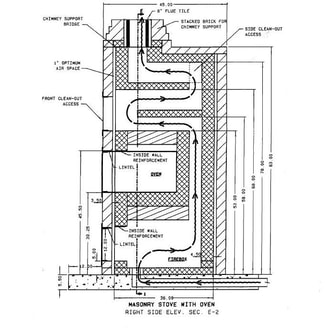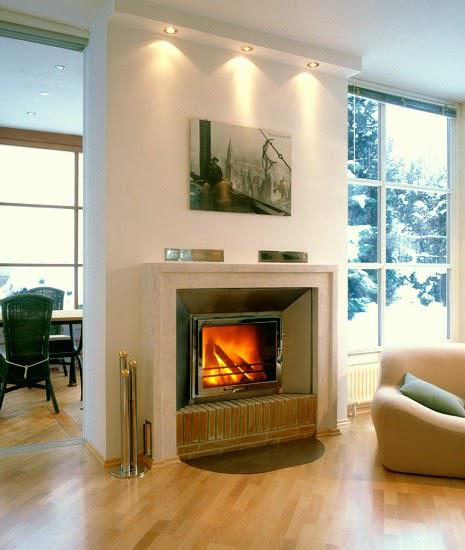The Pro's and Con's of a Masonry Heater

A masonry heater as defined by the the Masonry Heater Association of North America is
“... a site-built or site-assembled, solid-fueled heating device constructed mainly of masonry materials in which the heat from intermittent fires burned rapidly in its firebox is stored in its massive structure for slow release to the building. It has an interior construction consisting of a firebox and heat exchange channels built from refractory components.” To put that in plainer English you could call a masonry heater a big wood stove made out of brick or similar materials that is capable of capturing heat from a burning fuel source and slowly releasing that heat into a space. There are many features that make a masonry a great choice for you home heating needs and I will touch on just a few of them with this article. But to keep things fair I will also go into a few of the cons because you can’t really understand something until you know both sides of it. Pro’s of a Masonry Heater
Efficiency Like I said above masonry stoves are very efficient form of heating for your home. They have efficiency ratings sometimes 20-30% greater than even modern metal wood stoves. This has to do with their unique design and the way you are supposed to use them. Obviously the main component in masonry stoves is brick, concrete or some other similar material. Material like these have the ability to absorb radiant heat and store it for long periods without getting hot. Unlike metal stoves which get very hot quickly and release the heat immediately without any storage capacity. The next design element that makes them so efficient is the chimney setup. You can see in the diagram on the right that the chimney isn't straight and instead weaves back and forth. This weaving back and forth captures the heat contained in the hot gases and smoke that is flowing out the chimney. This heat is then radiated in the house instead of going straight outside. So the design is critical in the stove efficiency but so is how you use them. This type of stove is designed for hot, quick burns which utilizes the fuel to it best potential. With metal wood stoves if you burned the wood hot and quick you would either cook yourself out of your house, damage the stove or both. 
Great Aesthetics
Doesn’t that stove on right just look like a great addition to the room. Masonry stoves can be designed to fit in with any space or decor and are a great addition to any room. They can also be very functional with additional features like ovens for baking and seating built into the stove. This seating will be warmed by the stove when it being used and could be the most comfy spot in the house on those cold days. Less Pollution Masonry stoves are also great for the environment. They have such a high combustion temperature that very little of the fuel doesn’t get used to generate heat. In lower efficiency stoves you can see ash and other particulates coming out of the chimney which are common atmospheric pollutants. Con’s of a Masonry Stove
Size As I'm sure you have figured out by now these are not small stoves. They require a good foundation and lots of materials to work as an effective masonry stove. According to Masonry Heaters Association of North American a masonry stove must have these minimums to be called one,
All that adds up to a lot of floor space in small area so good design is critical if one of these stoves is going in from the beginning of construction. Expense Even these days where a lot of the components in the stove can be precast and bulk manufactured they are still very expensive. A good masonry stove will cost you thousands of dollars and that doesn’t yet include the services of a skilled mason and what you do the exterior to make it look good. But the lifetime costs of a stove like this should be taken into account as well. They operate very cheaply and require little maintenance so they could be a excellent long term investment but they will hurt your pocket book in the short term. Adding one to an existing structure This is one of the major cons from my perspective because it is difficult to add one to existing structures. Between the foundation reinforcements, roof modifications and other expenses that go with adding something so large to an existing structure it can be more hassle than it's worth. If you really want one it can be done but you will have to put up with a lot of mess before it is done. The flip side to this is that a metal wood stove can be installed in a day with the right tools and a few helping hands. For more information check out the sources in this article or other information in the Green Living Library. Sources: By Alex south (Own work) [CC BY-SA 3.0 (http://creativecommons.org/licenses/by-sa/3.0)], via Wikimedia Commons http://www.mha-net.org/what-is-a-masonry-heater/ http://dnr.mo.gov/pubs/pub781.pdf |
Further Reading |
“As an Amazon Associate I earn from qualifying purchases.”

